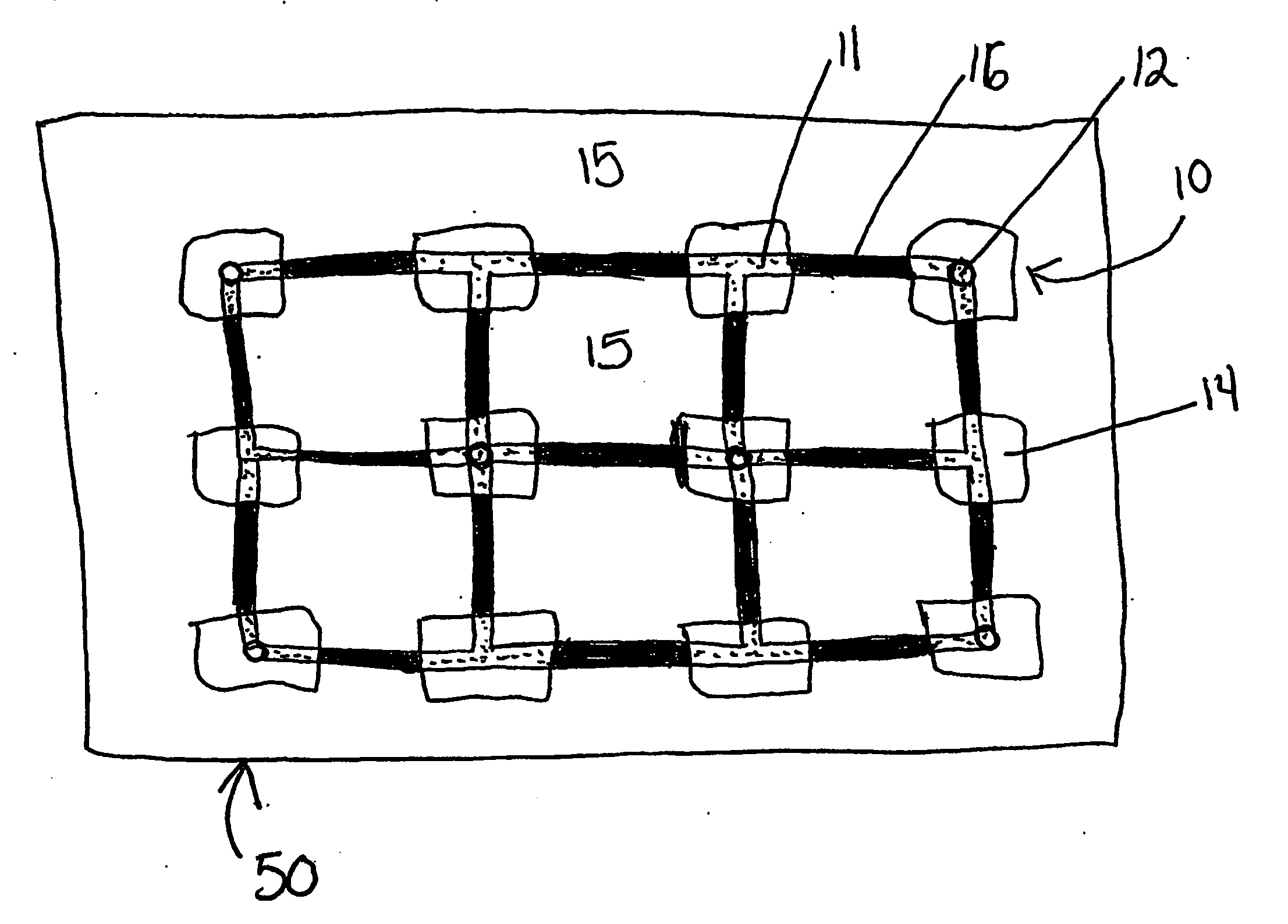Aerobic and anaerobic waste management systems and methods for landfills
a waste management system and anaerobic technology, applied in the field of aerobic and, can solve the problems of reducing the total land area required to host increasing the difficulty of allowing new landfills and landfill expansions, and increasing the cost of constructing new or expanded landfills, so as to prevent leakage and seep into the surrounding environment, minimize liquid infiltration, and maximize the effect of disposal capacity
- Summary
- Abstract
- Description
- Claims
- Application Information
AI Technical Summary
Benefits of technology
Problems solved by technology
Method used
Image
Examples
Embodiment Construction
[0024] The invention provides systems and methods for creating, managing and staging aerobic and / or anaerobic landfills. The invention provides methods for collecting liquids from and recirculating liquids into landfills and methods for collecting gases from and introducing gases into landfills.
[0025] Liquids may be applied to landfills on a continuous or an intermittent basis in order to maintain the landfill moisture content in a range from about 20 wt % to about 65 wt %; or from about 35 wt % to about 55 wt %. In arid regions, moisture can typically only be increased from about 10 wt % to about 20 wt % because the starting waste moisture content is very low. The moisture content of the waste can lie outside this range depending upon the moisture holding capacity of the waste and the purpose for adding liquid to the landfill. In one embodiment, liquids are added to the landfill in an amount of about 10,000 to about 20,000 gallons / day for each 1,000 tons / day of waste brought into ...
PUM
 Login to View More
Login to View More Abstract
Description
Claims
Application Information
 Login to View More
Login to View More - R&D
- Intellectual Property
- Life Sciences
- Materials
- Tech Scout
- Unparalleled Data Quality
- Higher Quality Content
- 60% Fewer Hallucinations
Browse by: Latest US Patents, China's latest patents, Technical Efficacy Thesaurus, Application Domain, Technology Topic, Popular Technical Reports.
© 2025 PatSnap. All rights reserved.Legal|Privacy policy|Modern Slavery Act Transparency Statement|Sitemap|About US| Contact US: help@patsnap.com



